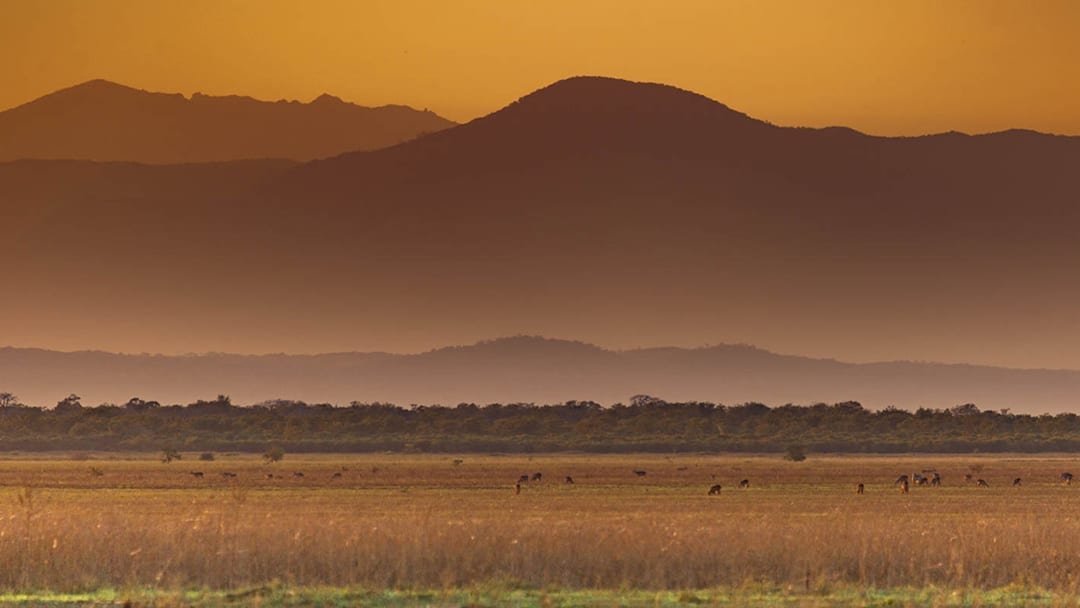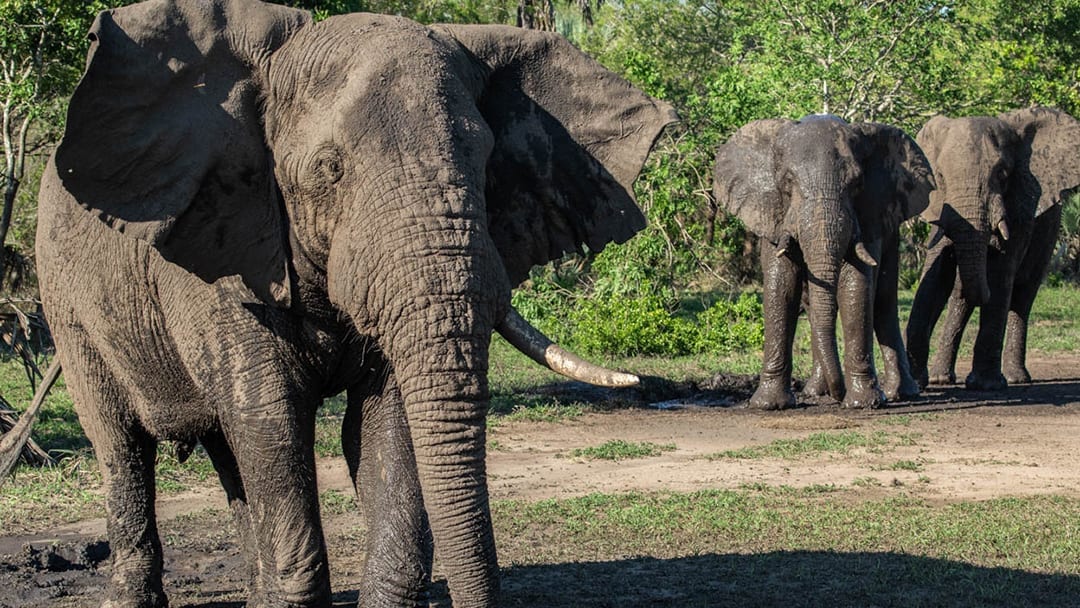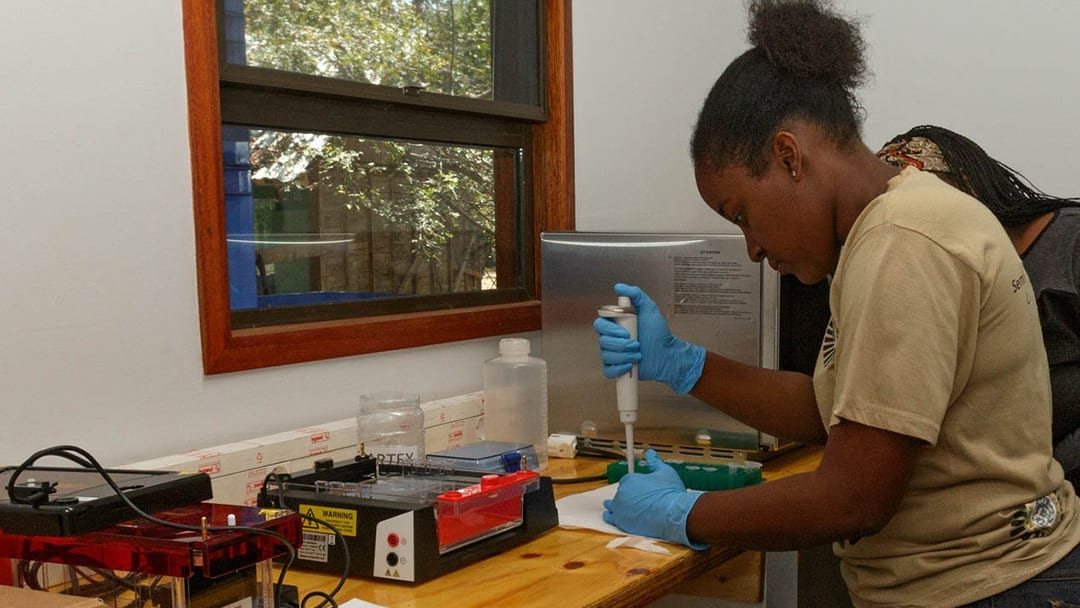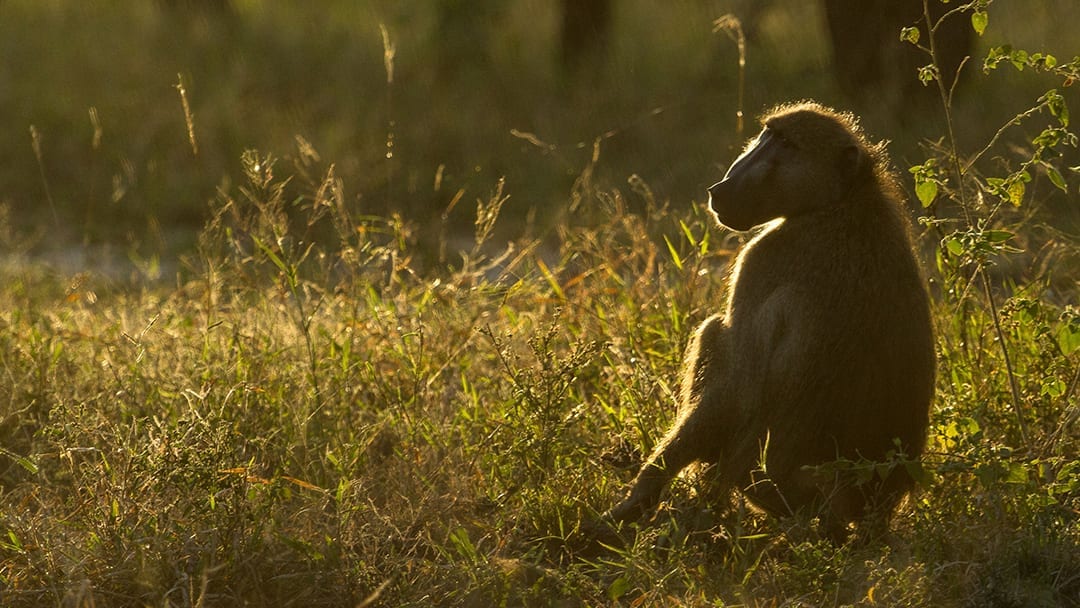Princeton @ Gorongosa

Gorongosa National Park’s powerful history — the catastrophic decline and loss of large mammals in the late 20th century, followed by the dramatic recovery of wildlife over the past decade — make it one of the best places in the world to study how biodiversity shapes and sustains healthy ecosystems. What happens when an ecosystem is suddenly deprived of its large herbivores and carnivores? What does recovery look like? And what lessons might Gorongosa hold for the rewilding of other ecosystems worldwide where large mammals have been extinguished?
Since its inception, the Pringle Lab at Princeton has worked in Gorongosa National Park. Gorongosa offers unique opportunities to solve fundamental mysteries about the rules of life, while simultaneously assisting in an unprecedented conservation effort. Our research in Gorongosa addresses questions about the effects of conflict on biodiversity, the efficacy of large-scale ecosystem restoration, animal diet and nutrition, predator-prey interactions, ‘trophic cascades’, and the behavioral ecology of antelopes and other large mammals. Increasingly, we are also working on forecasting the effects of climate change on the Gorongosa Ecosystem, and on how Gorongosa can be part of the solution to this global challenge.

This research is led by Professor Robert Pringle of Princeton’s Department of Ecology & Evolutionary Biology, in collaboration with investigators from other institutions in the US and Mozambique. Professor Pringle received his MSc from Oxford, where he studied African history and environmental management. He completed his Ph.D. in biology at Stanford University in 2009 and subsequently spent three years as a Junior Fellow in the Society of Fellows at Harvard University. In 2012, he joined the faculty at Princeton, where he is a Professor in the Department of Ecology & Evolutionary Biology. To date, more than 30 Princeton undergraduates, PhD students, and post-doctoral researchers have contributed to this growing body of work, with support from the US National Science Foundation, National Geographic, the Princeton Environmental Institute, the Cameron Schrier Foundation, and the Carr Foundation.

Pringle and his team use diverse methods, ranging from field experiments and GPS tracking of collared animals to molecular biology, remote sensing, and mathematical modeling. Research from the Pringle Lab has shown that the prolonged absence of elephants and other herbivores from Gorongosa resulted in a park-wide increase in tree cover, and that the scarcity of top carnivores has caused herbivores to colonize new habitats and change their diets. Perhaps most excitingly, recent work in the Pringle Lab has shown that Gorongosa’s pioneering experiment in large-scale rewilding is actually working to heal the ecosystem: the recovery of large herbivores has rapidly restored key ecosystem functions, such as the suppression of harmful invasive plant species. This research has been featured in The Economist, the BBC, the New York Times, and, most recently, in a PBS NOVA documentary special.

Current projects in the Pringle Lab at Gorongosa use the technique of DNA metabarcoding to analyze the diets of species ranging from antelopes and elephants to wild dogs and pangolins — as well as to analyze the biodiversity of Gorongosa’s ponds and lakes — with the aim of piecing together the Gorongosa food web. A particular focus, in collaboration with Dr. Ryan Long’s lab at the University of Idaho, is on the ecology of Gorongosa’s spiral-horned antelopes: bushbuck, nyala, and kudu. By using GPS telemetry in conjunction with large-scale experimental manipulations, DNA metabarcoding diet analysis, and LiDAR-based remote sensing, this work seeks to understand how these different-sized animals move, eat, and interact in a world that is being reshaped by climate change.
The Pringle Lab welcomes inquiries from scientists who wish to join the lab and participate in this research as PhD candidates or postdoctoral researchers at Princeton. Details on applying to Princeton’s PhD program can be found on the Department of Ecology & Evolutionary Biology website. The Pringle Lab especially seeks to support Mozambican scientists; prospective PhD candidates should consider applying to the EEB Scholars Program to learn more about Princeton and about graduate study in the United States more broadly. All prospective applicants should reach out to Professor Pringle via email.

Publications 2020
Pringle, RM and MC Hutchinson. 2020. Resolving food-web structure. Annual Review of Ecology, Evolution, and Systematics 51 (in press).
Kartzinel, TR and RM Pringle. 2020. Multiple dimensions of dietary diversity in large mammalian herbivores. Journal of Animal Ecology doi:10.1111/1365-2656.13206. [link]
Pringle, RM. 2020. Untangling food webs. Pp. 225-238 in A Dobson, RD Holt, and D Tilman (eds), Unsolved Problems in Ecology. Princeton University Press, Princeton, NJ, USA.
Guyton, JA, J Pansu, MC Hutchinson, TR Kartzinel, AB Potter, TC Coverdale, JH Daskin, AG da Conceição, MJS Peel, ME Stalmans, and RM Pringle. 2020. Trophic rewilding revives biotic resistance to shrub invasion. Nature Ecology & Evolution 4:712-724 doi:10.1038/s41559-019-1068-y. [link]
Pringle, RM. 2020. Paleoecology: the functional uniqueness of ancient megafauna. Current Biology 30:R32–R35. [link]

Branco, PS, JA Merkle, RM Pringle, L King, T Tindall, M Stalmans, and RA Long. 2019. An experimental test of community-based strategies for mitigating human-wildlife conflict around protected areas. Conservation Letters 2019:e12679. [PDF]
Kartzinel, TR, JC Hsing, PM Musili, BRP Brown, and RM Pringle. 2019. Covariation of diet and gut microbiome in African megafauna. Proc. Natl. Acad. Sci. USA 116:23588–23593. [PDF]
Reese, AT, TR Kartzinel, BL Petrone, PJ Turnbaugh, RM Pringle, and LA David. 2019. Using DNA metabarcoding to evaluate the plant component of human diets: a proof of concept. mSystems 4:e00458-19. [PDF] [Commentary by F Maixner]
Wegener, JE, KP Mulder, RM Pringle, JB Losos, and JJ Kolbe. 2019. Head size of male and female lizards increases with population density across island populations in the Bahamas. Breviora 566:1-9. [PDF]
Coverdale, TC, IJ McGeary, RD O’Connell, TM Palmer, JR Goheen, M Sankaran, DJ Augustine, AT Ford, and RM Pringle. 2019. Strong but opposing effects of associational resistance and susceptibility on defense phenotype in an African savanna plant. Oikos 128:1772-1782. [PDF]
Pringle, RM, TR Kartzinel, TM Palmer, TJ Thurman, K Fox-Dobbs, CCY Xu, MC Hutchinson, TC Coverdale, JH Daskin, DA Evangelista, KM Gotanda, NA Man in ‘t Veld, JE Wegener, JJ Kolbe, TW Schoener, DA Spiller, JB Losos, and RDH Barrett. 2019. Predator-induced collapse of niche structure and species coexistence. Nature 570: 58-64. [PDF] [Nature News & Views by Os Schmitz] [‘Behind the Paper’]
Hu J, AM Askary, TJ Thurman, DA Spiller, TM Palmer, RM Pringle, and RDH Barrett. 2019. The epigenetic signature of colonizing new environments in Anolis lizards. Molecular Biology and Evolution. 36:2165–2170. [PDF]
Pringle, RM. 2019. A mountain of ecological interactions. Nature 568:38-39. [PDF]
Atkins, JL, RA Long, J Pansu, JH Daskin, AB Potter, M Stalmans, CE Tarnita, and RM Pringle. 2019. Cascading impacts of large-carnivore extirpation in an African ecosystem. Science 364:173-177. [PDF]
Stalmans ME, TJ Massad, MJS Peel, CE Tarnita, and RM Pringle. 2019. War-induced collapse and asymmetric recovery of large-mammal populations in Gorongosa National Park, Mozambique. PLOS ONE 14:e0212864. [PDF]
Branco, PS, JA Merkle, RM Pringle, J Pansu, AB Potter, A Reynolds, M Stalmans, and RA Long. 2019. Determinants of elephant foraging behavior in a coupled human-natural system: is brown the new green? Journal of Animal Ecology 88:780-792. [PDF]
Gill, BA, S Kurukura, AA Hassan, JR Goheen, WJ Kress, M Kuzmina, RM Pringle, and TR Kartzinel. 2019. Plant DNA-barcode library and community phylogeny for a semi-arid East African savanna. Molecular Ecology Resources 19:838-846. [PDF]
Pansu, J, JA Guyton, AB Potter, JL Atkins, JH Daskin, B Wursten, TR Kartzinel, and RM Pringle. 2019. Trophic ecology of large herbivores in a reassembling African ecosystem. Journal of Ecology 107:1355-1376. [PDF]
Our Mission
Our Mission
Advance an integrated multi-partner approach to conservation and to people-centred development. The Gorongosa Project protects the Park’s biodiversity and ecosystem services and unlocks its economic potential for the community inhabitants of the Gorongosa Buffer Zone, Sofala Province, Mozambique and further afield.
Our Vision
A thriving, biodiversity-rich, Greater Gorongosa conservation landscape, which supports Sofala Province as an engine for resilient and sustainable development enabling nature experiences and wellbeing for its people, enriching all of Mozambique and the world.
A Park for Peace
On 1 August, 2019 a historic ceremony was held in Gorongosa to celebrate the Cessation of Hostilities Accord between the leaders of the Government of Mozambique and the opposition Renamo Party. The accord established Gorongosa National Park (GNP) as a ‘Park for Peace’, delivering human development to the communities that share the greater landscape.
Ethics and Compliance
The Ethics and Compliance e-mail is a reporting mechanism that facilitates reporting of possible illegal, unethical, or improper conduct from staff, suppliers and stakeholders. The e-mail is Ethics@gorongosa.net











